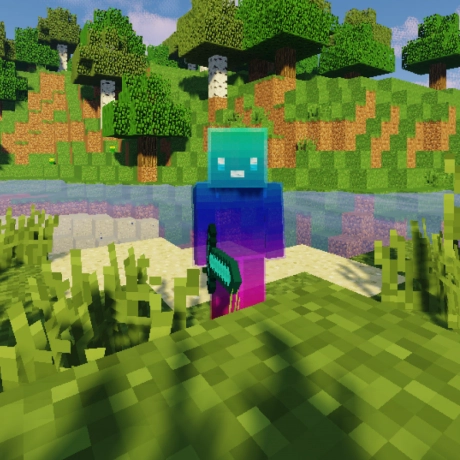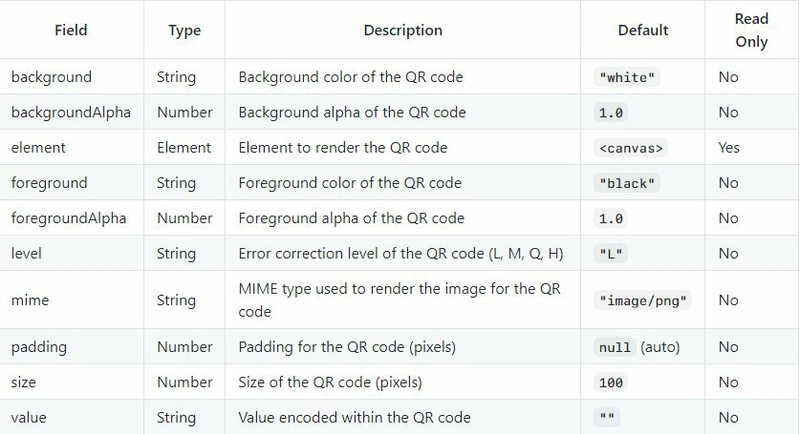创建二维码生成器
大家好,今天我们将学习如何使用开源库qrious.js创建二维码生成器。该库基于上一篇文章讨论的原理(模块、对齐标记、时序模式等),使用不同的算法生成二维码。我强烈建议您阅读上一篇文章,以便更好地理解二维码的工作原理:
我们走吧
首先要做的就是获取库。例如,您可以使用 CDN(内容分发网络),或者直接将其下载到您的计算机/服务器。
对于那些希望使用 CDN 的人,我建议将此链接包含在您的文档中:
<script src="https://cdnjs.cloudflare.com/ajax/libs/qrious/4.0.2/qrious.min.js"></script>
对于那些想要下载该库的人,你可以通过 NPM:$ npm install --save qrious或 Bower:$ bower install --save qrious或通过最新版本页面下载它。
一旦包含在您的文档中,我们将创建 HTML 结构:
<div>
<h1>Are you ready to create your own Qr code?</h1>
<div class="container-divided">
<textarea placeholder="Type something" id="qrCodeTextArea"></textarea>
<canvas id="qr"></canvas>
</div>
</div>
qrious.js 库通过 html 元素生成二维码,如果没有这些元素,您将无法生成二维码。不过,您可以为<canvas>元素指定您选择的 id。
添加样式
现在我要为我的各种元素添加一些样式,当然,如果您愿意,也可以自定义 CSS。
@import url("https://fonts.googleapis.com/css2?family=Lato&display=swap");
@media (min-width: 545px) {
html, body {
height: 100%;
}
}
body {
background: url("https://i.ibb.co/f0sL4rx/t-l-chargement.jpg");
background-size: cover;
background-repeat: no-repeat;
backdrop-filter: saturate(180%) blur(20px);
-webkit-backdrop-filter: saturate(180%) blur(20px);
margin: 0;
position: relative;
z-index: 1;
}
body h1 {
color: white;
font-family: "Lato", sans-serif;
margin: 10px 25px;
text-align: center;
}
div {
display: flex;
flex-direction: column;
align-items: center;
align-content: space-around;
justify-content: center;
}
div .container-divided {
flex-direction: row;
flex-wrap: wrap;
width: 900px;
max-width: 95%;
height: fit-content;
justify-content: space-around;
margin: 50px 0;
}
div .container-divided textarea {
margin: 0 0 50px 0;
background: #eaeaea;
color: black;
display: block;
padding: 14px 10px;
outline: none;
border-radius: 4px;
width: 300px;
max-width: 95%;
height: 250px;
text-align: left;
resize: vertical;
text-indent: 10px;
border: none;
font-size: 15px;
}
div .container-divided textarea::-moz-selection {
color: inherit;
background-color: rgba(118, 199, 239, 0.54);
}
div .container-divided textarea::selection {
color: inherit;
background-color: rgba(118, 199, 239, 0.54);
}
input {
font-size: 1rem;
font-family: "Open Sans", sans-serif;
text-align: center;
margin-bottom: 4rem;
border: none;
border-bottom: 2px solid #fff;
padding: 0.5rem;
background-color: transparent;
color: #fff;
outline: none;
}
input::placeholder {
color: #fff;
}
input::-moz-placeholder {
color: #fff;
}
input:-ms-input-placeholder {
color: #fff;
}
canvas {
width: 200px;
height: 200px;
}
设置图书馆
要设置这个库,您可以使用位于 github 上的文档,或者使用此表,它可以让您了解可以在这个库中设置的不同参数。
生成的 JS 代码如下所示:
// Our textarea
const input = document.querySelector("#qrCodeTextArea");
// Our canvas element with 'qr' id
const canvas = document.getElementById("qr");
// The various parameters
const createQR = v => {
return new QRious({
element: canvas,
value: v,
level: "L",
size: 400,
backgroundAlpha: 0,
foreground: "white" });
};
// We create the qr code
const qr = createQR(input.value);
// If the text box changes, update the qr code.
input.addEventListener("input", () => {
const qr = createQR(input.value);
});
经过几分钟的代码编写,您可以看到以下结果:
我希望你喜欢本教程,如果你有任何疑问,请随时在评论中问我。👍
文章来源:https://dev.to/clementgaudiniere/create-a-qr-code-generator-1b0p 后端开发教程 - Java、Spring Boot 实战 - msg200.com
后端开发教程 - Java、Spring Boot 实战 - msg200.com

